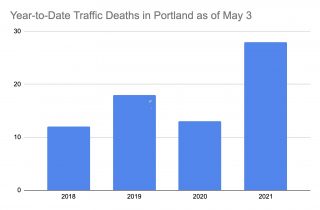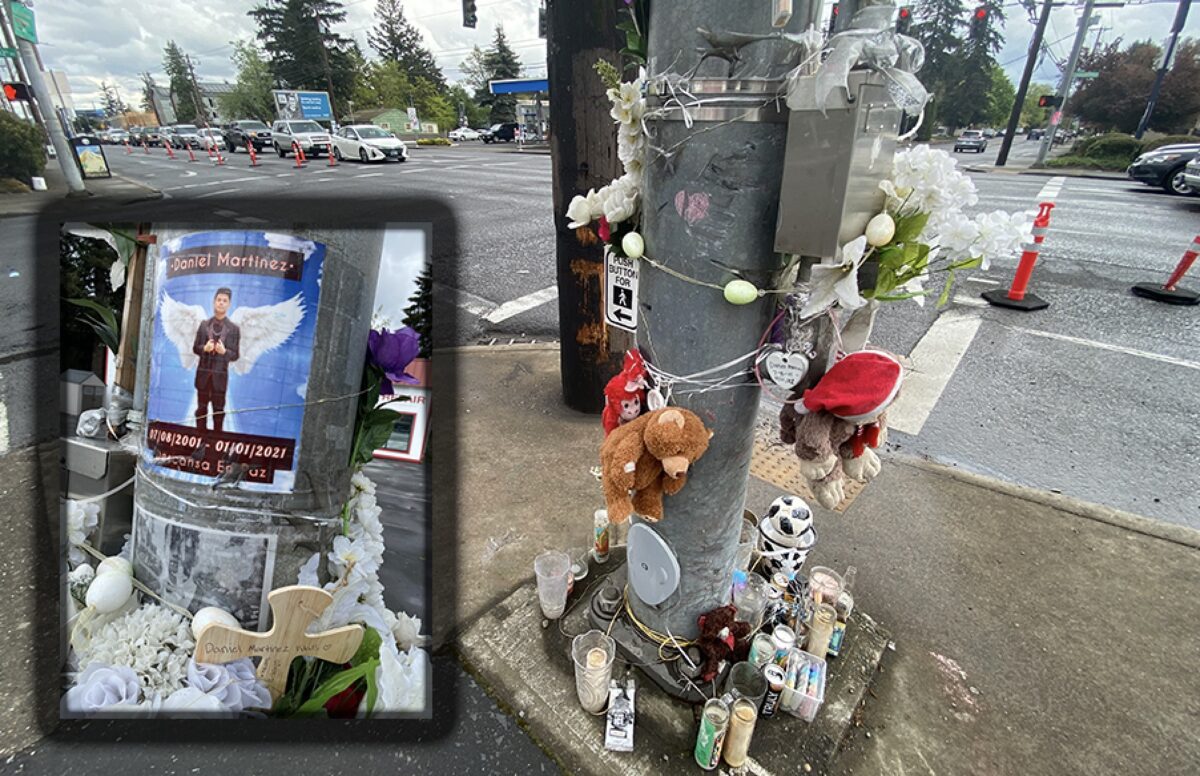
(Photos: Jonathan Maus/BikePortland)
So far this year our tally of Portland traffic fatalities stands at 28 people, a 115% increase over the 13 deaths we had at this same date last year. This comes after a record level of deaths in 2020 which the City of Portland called “unusual and tragic.”
With just four years until our 2025 “Vision Zero” goal of no more traffic deaths, we are headed in the opposite direction. It’s clear that despite both the Portland Bureau of Transportation and Oregon Department of Transportation saying they are committed to safety and zero deaths, they are not doing nearly enough to make it a reality.
For perspective, between 1998 and 2020 Portland averaged 33 deaths per year. At the rate we’re going — one death every four-and-half-days — we’ll hit that average before the end of May.
Keep in mind that the BikePortland tally is a bit higher than the Portland Police Bureau’s (we include suspected suicides, deaths that don’t involve motor vehicles, and so on). The PPB total stands at 24 deaths as of today, which is still an 85% increase over last year.
“We are always very cautious about defining trends over short time frames. That is especially true over as short a period as four months.”
— John Brady, PBOT
A closer look at the list reveals nothing too extraordinary, beyond the sheer volume of fatalities: the crashes were split evenly between city and state-owned roadways and 12 of the deceased were vulnerable road users (not using cars). The one thing that stands out is that we’ve had three double-fatal crashes that were caused by a person who was driving the wrong way on a major freeway.
While we grapple with these tragedies and the conditions that cause them, advocates and community leaders are organizing a rally to draw attention to the two deaths that happened two weeks apart at Northeast 82nd and Alberta last month. The plan so far is to meet at the intersection on Friday at 4:00 pm to draw attention to this crisis. “We demand an emergency speed reduction, as well as funding for safety improvements on 82nd Ave, followed by transfer from ODOT to PBOT jurisdiction,” said one of the lead organizers on Twitter Friday.
Advertisement
Among the speakers will be Oregon State Representative Khanh Pham, a former east Portland community activist who called for an emergency speed reduction and other measures last week.
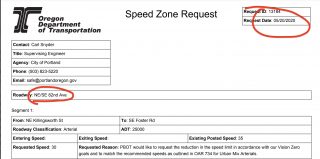
Asked about the possibility of the speed limit reduction last week, ODOT Region 1 Director Rian Windsheimer said his agency is, “In the process of considering a permanent speed reduction for all of 82nd Avenue from Killingsworth to Clatsop Street.” This review of the speed limit comes in response to a PBOT request that was filed in May 2020. ODOT has sat on that request for 11 months and is just now looking to expedite it after two more people died at the hands of their inherently deadly road.
In early April, PBOT released a Vision Zero dashboard to, “Help Portlanders better understand and track the bureau’s efforts to eliminate deaths and serious injuries from Portland streets.” The agency also recently updated their logo to include the slogan, “Realizing safety in all communities.”
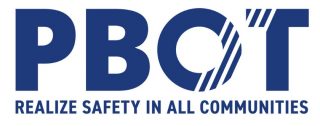
Back in February PBOT dissolved their Vision Zero Task Force in order to “engage a broader set of stakeholders”. One day after that announcement, amid another spate of deaths, PBOT Commissioner Jo Ann Hardesty took to Twitter to say, “I can assure you that myself and PBOT are digging deep into both immediate and long-term solutions to keep all Portlanders safe as they move around our city.”
Asked for comment today, PBOT Communications Director John Brady said, “Yes, there has been an alarming increase in traffic fatalities.” He said that even while their internal tally shows a 92% increase in fatalities compared to this date last year, “We are always very cautious about defining trends over short time frames. That is especially true over as short a period as four months.” “In fact, some of the fatalities are still being investigated, and it may be some time before we know definitively how they happened,” Brady added.
Brady offered a closer analysis of the statistics that show almost all of the increase has come from car and truck drivers and that the number of deaths to people biking, walking and using motorcycles have not changed. Brady also said crashes on ODOT-owned roads (freeways and urban highways) make up a majority of the crashes for the second year in a row (see graphic below) and that PBOT’s, “ability to affect the safety on state roads is very limited.” “It’s important for your readers to understand this critical distinction.”
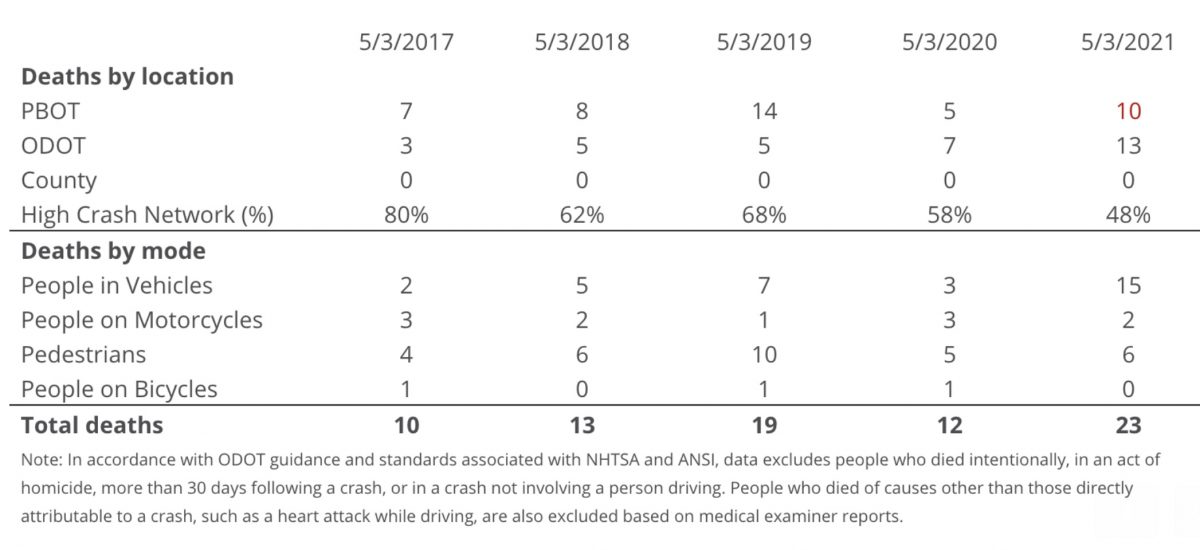
As our regional planning agency, Metro plays a key role in safety outcomes. They are a conduit for federal grant funding and their planners and researchers provide important modeling, statistics and analysis that informs many of the decisions made by PBOT and ODOT. Metro has announced a Regional Transportation Safety Forum that will take place May 26th.
— Jonathan Maus: (503) 706-8804, @jonathan_maus on Twitter and jonathan@bikeportland.org
— Get our headlines delivered to your inbox.
— Support this independent community media outlet with a one-time contribution or monthly subscription.

